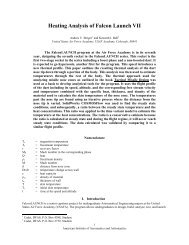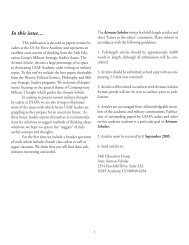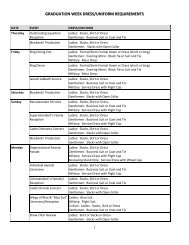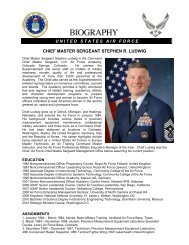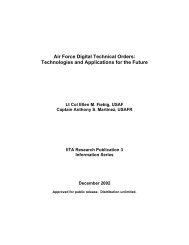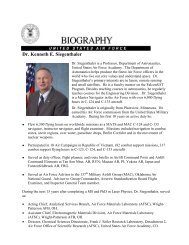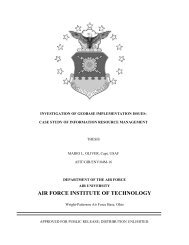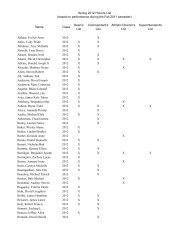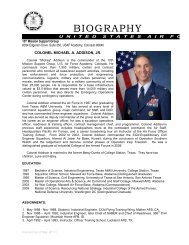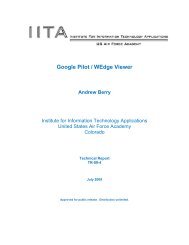the rollback of south africa's biological warfare program
the rollback of south africa's biological warfare program
the rollback of south africa's biological warfare program
You also want an ePaper? Increase the reach of your titles
YUMPU automatically turns print PDFs into web optimized ePapers that Google loves.
The chain <strong>of</strong> command demonstrates that major decisions about Project<br />
Coast were in <strong>the</strong> hands <strong>of</strong> Defense Minister Malan and top SADF generals.<br />
Above is <strong>the</strong> chain <strong>of</strong> command for Project Coast, along with <strong>the</strong> four<br />
companies that were established to develop <strong>the</strong> CBW <strong>program</strong>.<br />
In 1982, <strong>the</strong> Delta G Scientific Company began work on chemical<br />
<strong>warfare</strong> agents for Project Coast. The chemicals that Delta G developed for<br />
testing were divided into lethal, incapacitating, and irritating agents.<br />
Roodeplaat Research Laboratories (RRL) <strong>the</strong>n tested <strong>the</strong> <strong>biological</strong> effects <strong>of</strong><br />
<strong>the</strong> agents from Delta G. RRL was <strong>the</strong> company that was primarily responsible<br />
for <strong>biological</strong> <strong>warfare</strong>. Protechnik Company was to develop <strong>the</strong> protective<br />
CBW equipment.<br />
In 1983, RRL opened and started research on <strong>biological</strong> agents and on<br />
<strong>the</strong> <strong>biological</strong> effects <strong>of</strong> chemical agents. Daan Goosen became <strong>the</strong> first head<br />
<strong>of</strong> RRL and served until 1986. According to Gen. (ret.) Georg Meiring, South<br />
Africa developed a sophisticated and dispersed project. Project Coast was not<br />
just one individual and was not just RRL. 53 There were a number <strong>of</strong> different<br />
research and testing centers at universities and companies, and scientists in<br />
various parts <strong>of</strong> South Africa assisted Project Coast. Anthrax, cholera,<br />
botulinum, and a variety <strong>of</strong> pathogens were collected and/or developed at RRL<br />
and elsewhere for testing. Apparently, a principal objective was to collect and<br />
test a range <strong>of</strong> <strong>biological</strong> agents in order to develop protection from a Soviet<br />
BW attack. In 1984, Dr. Schalk van Rensburg joined RRL and started <strong>the</strong><br />
cholera research <strong>program</strong>. By <strong>the</strong> end <strong>of</strong> 1984, Project Coast and RRL had<br />
tested a range <strong>of</strong> BW toxins and had developed countermeasures to ricin and<br />
botulinum. Reportedly, <strong>the</strong>y had acquired anthrax, plague, cholera, E. coli,<br />
staph, necrotizing fasciitis, ricin, botulinum, gas gangrene, anti-matter bacteria,<br />
and <strong>the</strong> Ebola, Marburg, and Rift Valley viruses. 54 However, one must<br />
question if RRL had <strong>the</strong> facilities to keep Marburg, Rift Valley, and Ebola<br />
viruses.<br />
21




